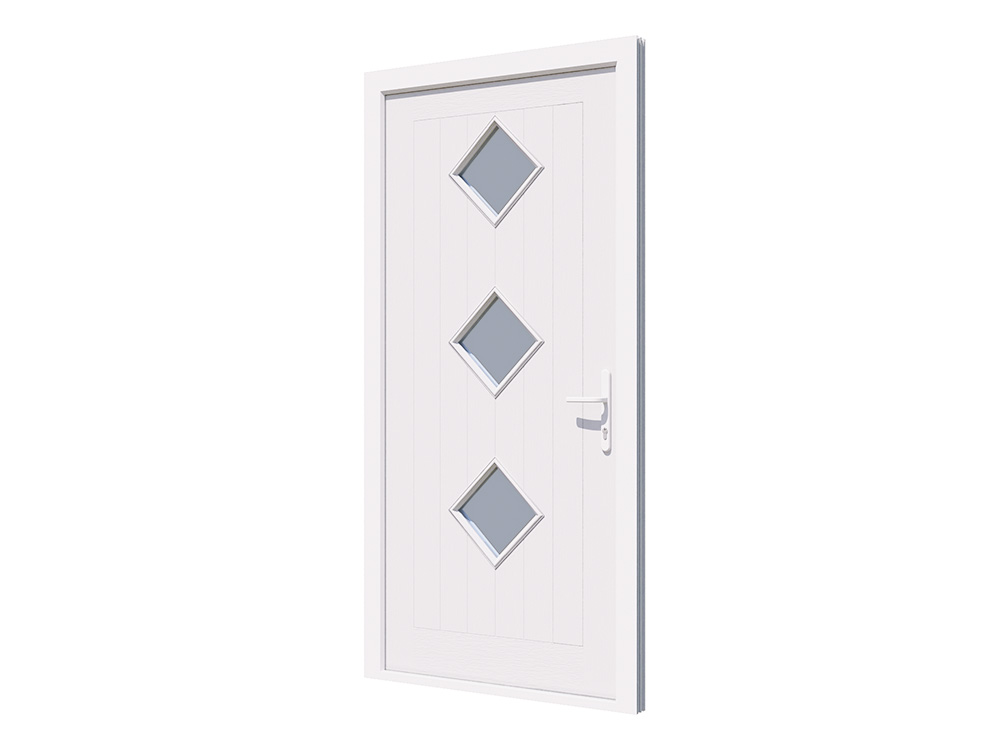
If you're shopping around for a new door, you’ve probably come across the terms “composite” and “uPVC” more times than you can count. They’re two of the most popular options out there, but unless you’re particular interested in fixtures and fittings, the difference isn’t always obvious. Here’s a breakdown of what sets them apart, how they perform, and which one might suit your home best.
What Are They Made Of?


Let’s start with the basics. uPVC (short for unplasticised polyvinyl chloride) is a type of plastic that’s rigid, durable and weather-resistant. A uPVC door is made entirely from this material, often with an internal steel core for strength. They’re lightweight, low-maintenance, and budget-friendly.
Composite doors, on the other hand, are made from a mix of materials – hence the name. Usually, it’s a combination of a polyurethane foam core, a uPVC frame, and a tough outer layer with panels made from glass reinforced plastic. This mix gives them more weight, more durability, and a bit more of a premium feel.
Difference in Aesthetics?
A big part of the decision often comes down to looks, and composite doors tend to have the edge here. They’re designed to mimic the appearance of a traditional timber door, complete with a woodgrain texture, but without the faff of actual wood maintenance. You can get them in loads of colours and styles with glazed panels and an option to have one colour on the outside and another on the inside.
uPVC doors have come a long way looks-wise, but they still have a slightly simpler, more uniform appearance. They’re great if you’re going for a clean, modern look or if you just want something that does the job without standing out too much. There are options for colours which will be the same as the colour for uPVC windows, but it will be less than the choice for composite doors.
Is one material stronger?
Both types of doors are secure, our 10-point locking system makes sure of that.

That said, composite doors are usually heavier and a bit more solid overall, which gives them a small edge when it comes to strength and durability. The multi-material construction helps them resist warping, scratching, and general wear and tear over time.
That’s not to say uPVC doors aren’t safe. They’re still tough and come with the same kind of multi-point locking systems you’d find on a composite. If you’re working to a budget but still want good security, a well-made uPVC door will do the trick just as well.
How is the insulation quality?
Both doors are designed to keep the elements out, but composite doors usually win when it comes to thermal performance. Their thicker structure and insulating materials help trap heat inside during winter and keep things cooler in the summer. If you're looking to maximise energy efficiency, especially on a front-facing door that gets a lot of exposure, composite is probably the way to go.
uPVC doors still offer solid insulation though, especially ours with our 5 chamber profile and 28mm double-glazed inserts. For a back door, or somewhere that doesn’t get battered by the weather, they’ll more than hold their own.
What about price?
Here’s where it gets important, how do they stack up when looking at the costs. uPVC doors are generally more affordable, which makes them a great option if you're renovating on a budget or just need something simple and reliable. Composite doors are pricier, but you’re paying for that extra durability, thermal performance, and a more premium look.
It’s perhaps best to compare them as a standard or premium model, a uPVC door is high quality and more than up for the job while a composite door is the upgraded version with an even better design, more colours and better insulative properties. Through that lens, the two types of doors
Is one better than the other?
So, composite vs uPVC? There’s no one-size-fits-all answer. If you’re after a sleek, tough and low-maintenance door that won’t break the bank, uPVC is a solid choice. But if you want something with a bit more heft, better insulation and a more traditional look, composite might be worth the extra spend.
Whichever way you go, both options are long-lasting, weather-resistant, and customisable—so it really comes down to what fits your home, your style, and your wallet.


















